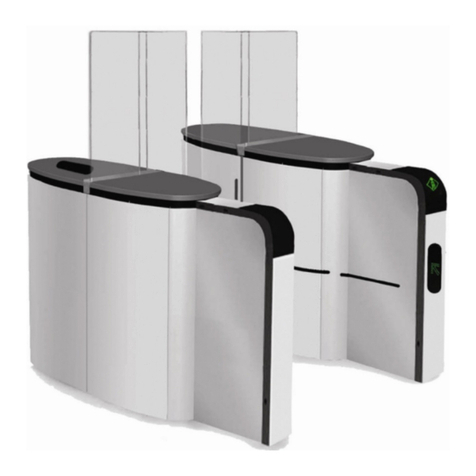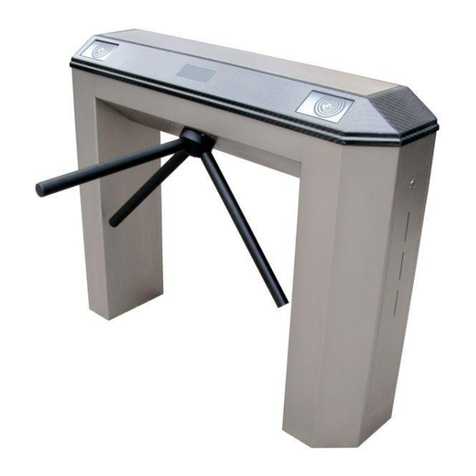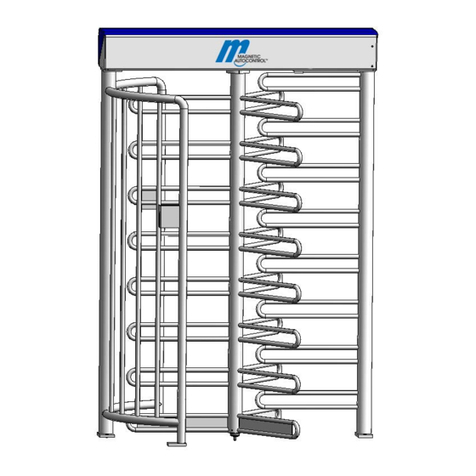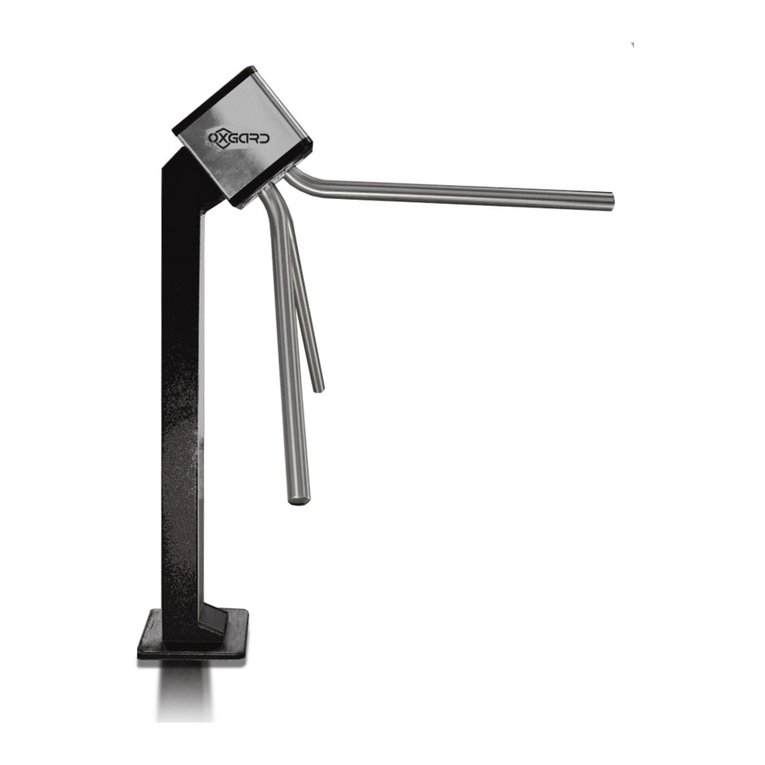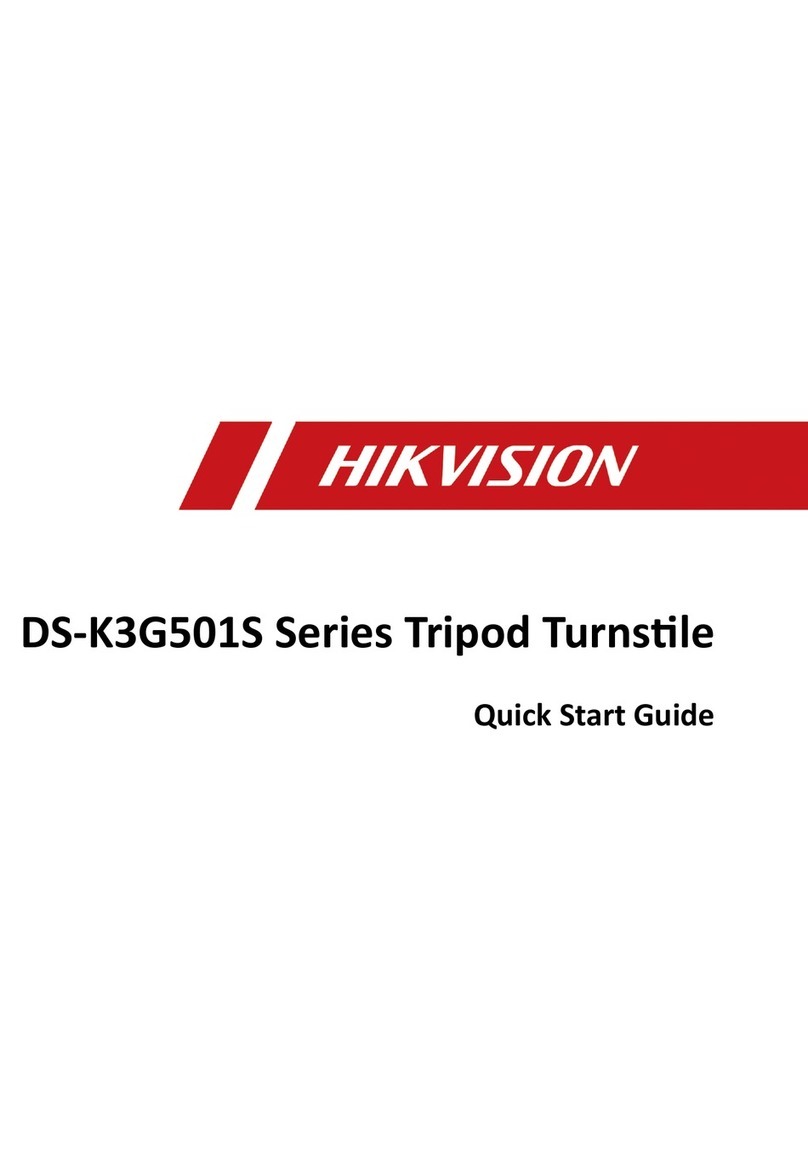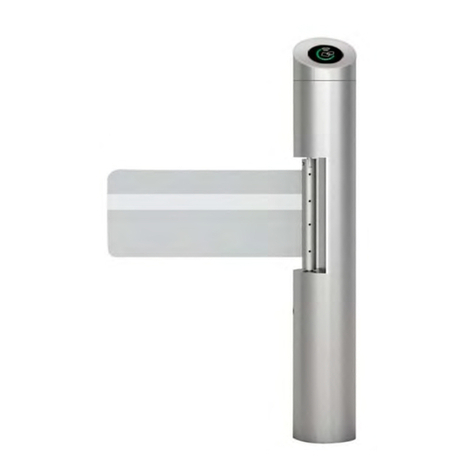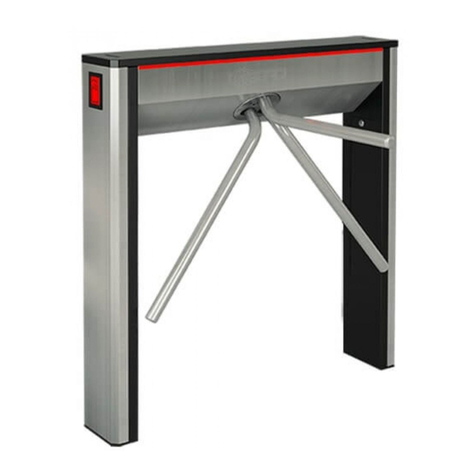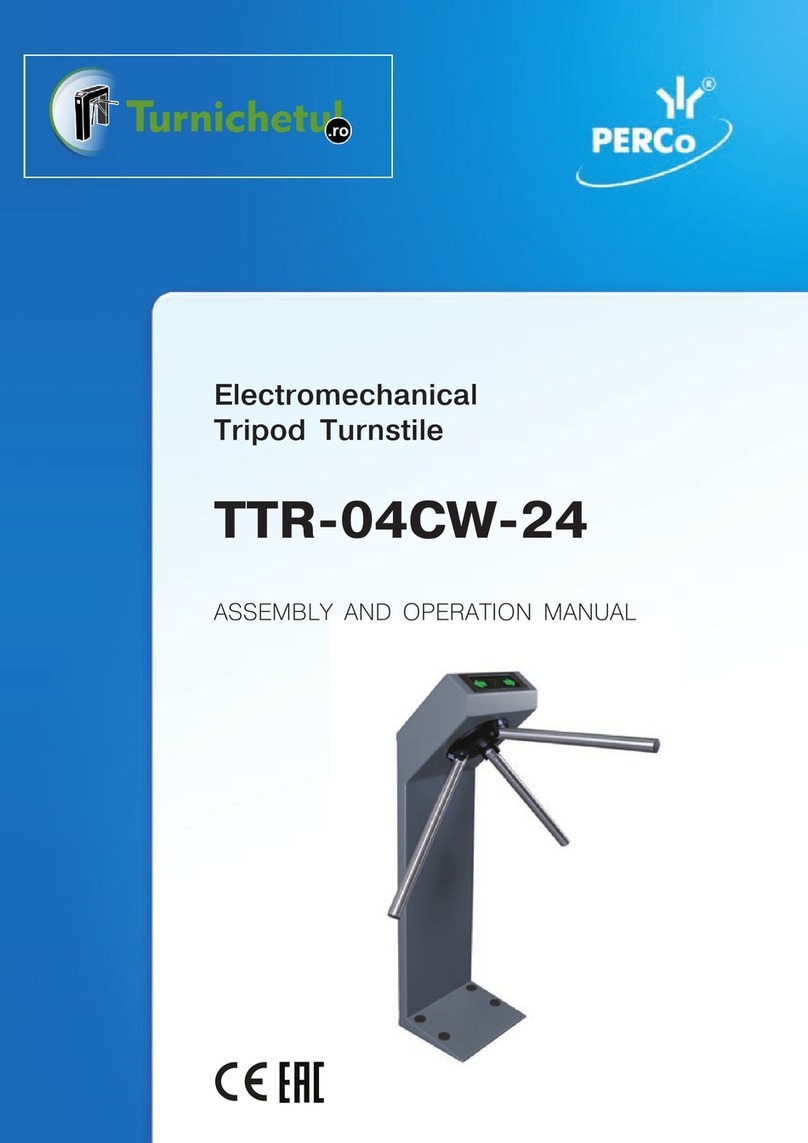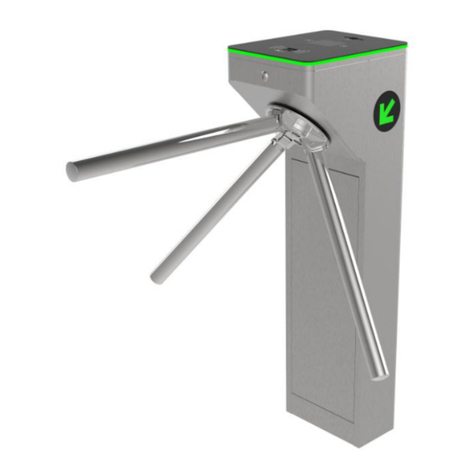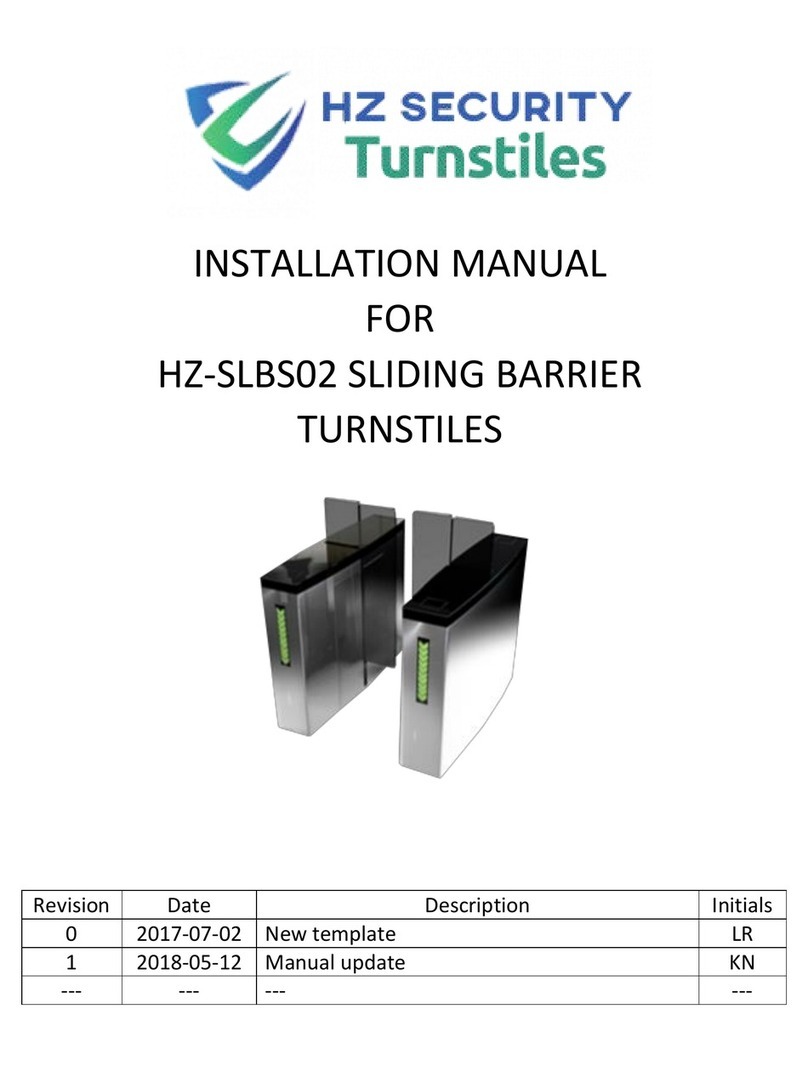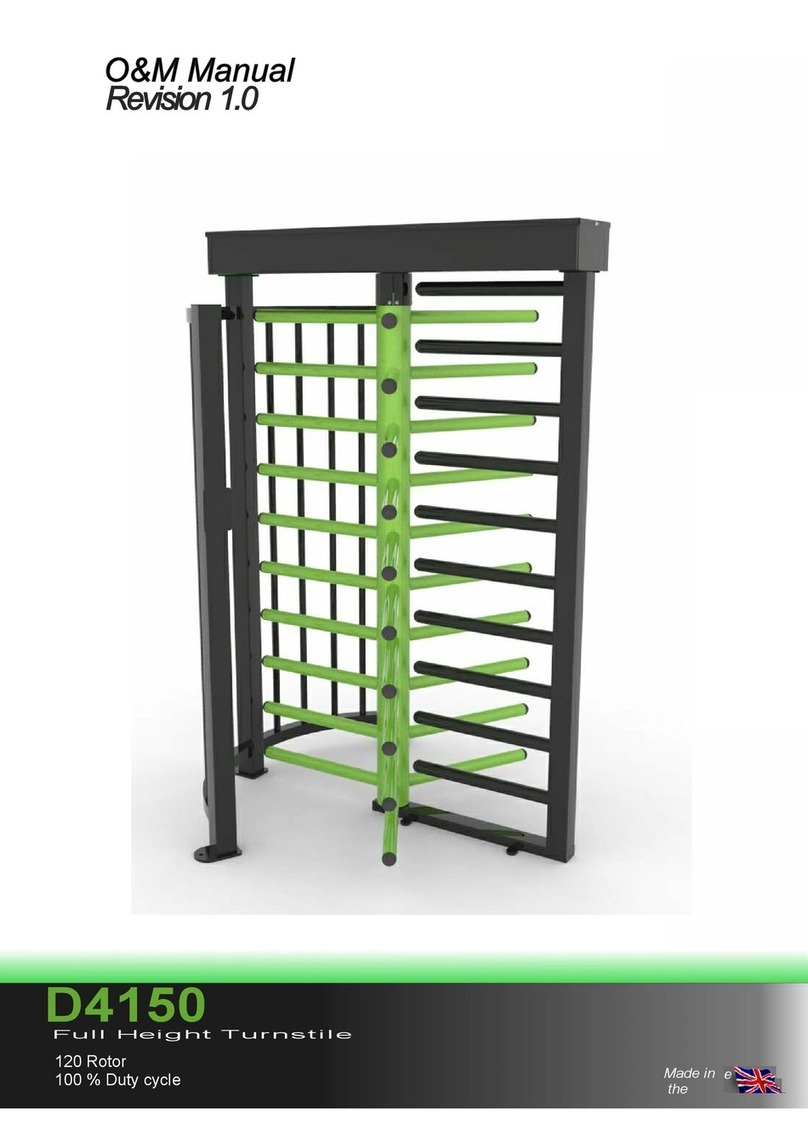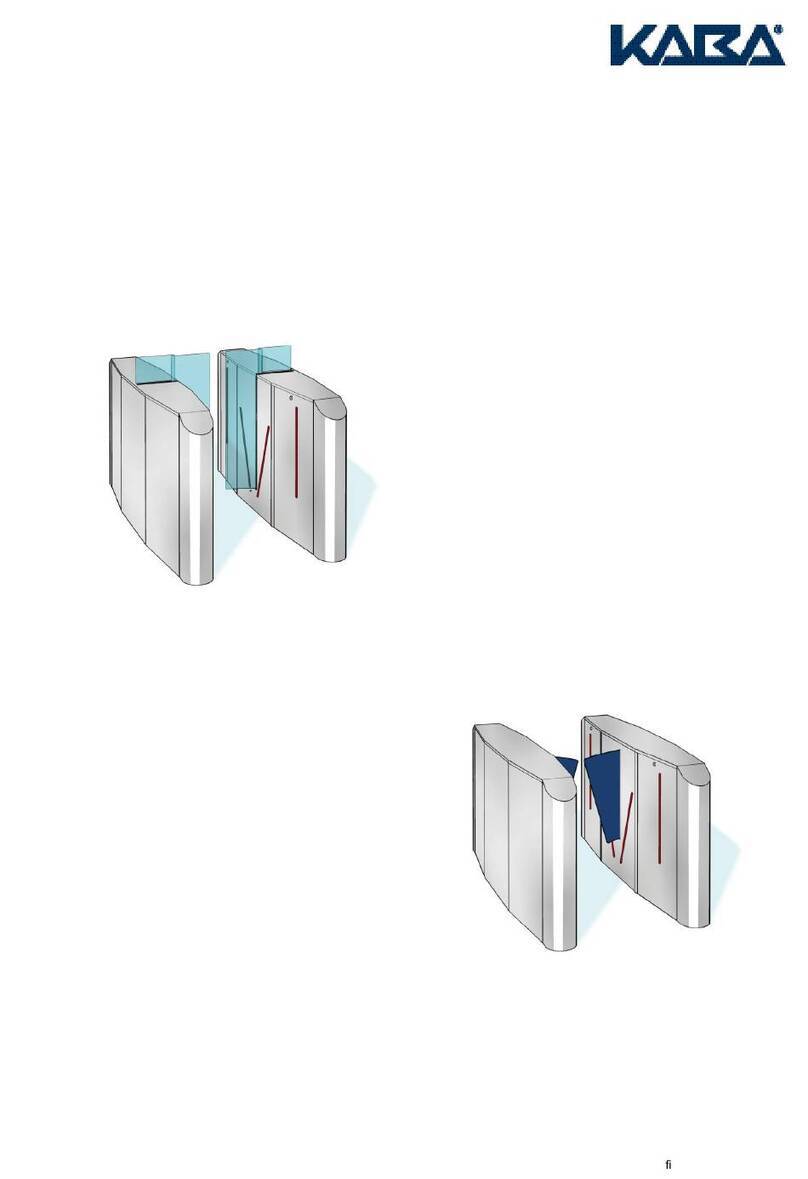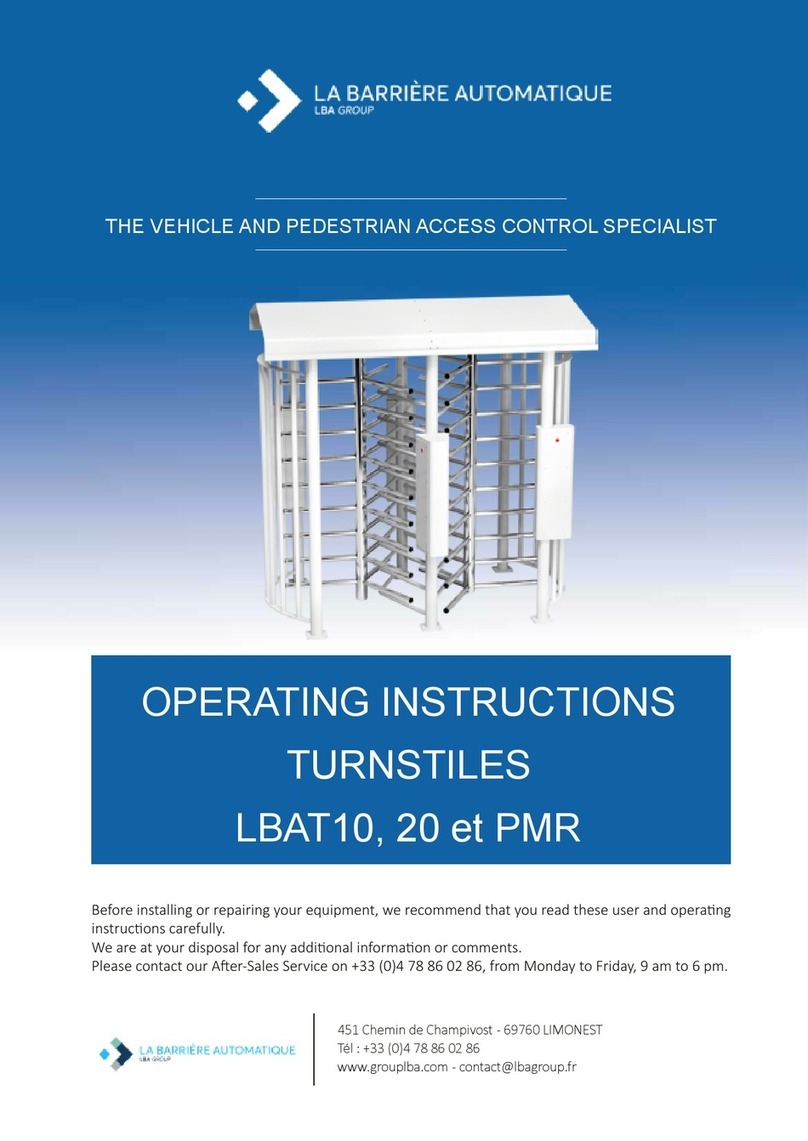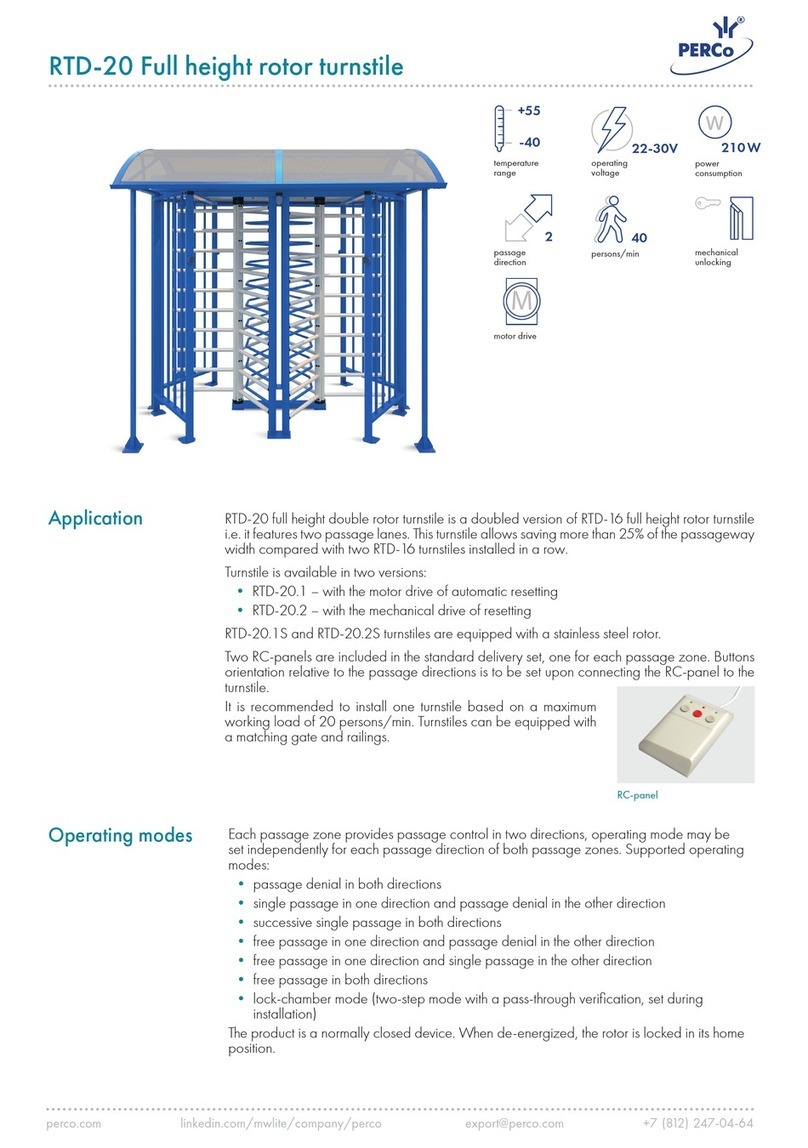
IntroductionandWarnings
2
This equipment is part of a large range of traffic flow products. They are designed to be easy to install, as
all settings and internal wiring have been completed in our factory.Any of the instructions in this manual
should only be carried out by a qualified service engineer or a competent person.
The turnstiles are ready to bolt down, connect to a single phase power supply and have any access
control wired into them (Please note that advice should be sought on wiring instructions). The steps must
be completed before the power is turned on to prevent accidents.
The following information is a guide only, and whilst we have made every effort to be accurate and correct
there may be errors which we cannot be held responsible for.
With a correct installation you can expect to enjoy many years of reliable service from this product, we do
however recommend that the product has a bi-annual service carried out by a qualified engineer. Please
contact our service department to obtain a quote. As we manufacture the products we are best suited to
care for your equipment.
Thank you for your custom and welcome to the exciting world of Total Traffic Flow Solutions.
//20
!
Important Safety Notice
Automatic turnstiles are designed to Control the flow of human
traffic only. It can be dangerous to allow the passage of any
other self-powered animal or device to utilise this method of
access without appropriate warnings and or signage.
It may be necessary for the end user of this product to provide
an alternative, safe method of access to cater for the previously
mentioned categories.
The end user should fit all necessary signage and warning
notices to either side of the turnstile, which should be visible and
clear from all directions of approach.
The product that was shipped to you was designed with a control
program to protect all categories from harm or affect this
however is only a precaution. It should not be modified or
tampered with by any unauthorised person not sanctioned by the
manufacturer.
Please sign and date below to say that you have read and
understood this notice before ANY installation work:
The“Warnings”leafletand“Instructionbooklet”suppliedwiththis
productshouldbereadcarefullyastheyprovideimportantinformation
aboutsafety,installation,useandmaintenance.
Scrappackingmaterials(plastic,cardboard,polystyreneetc)according
totheprovisionssetoutbycurrentstandards.Keepnylonorpolystyrene
bagsoutofchildren'sreach.
Keeptheinstructionstogetherwiththetechnicalbrochureforfuture
reference.
Thisproductwasexclusivelydesignedandmanufacturedfortheuse
specifiedinthepresentdocumentation.Anyotherusenotspecifiedin
thisdocumentationcoulddamagetheproductandbedangerous.
TheCompanydeclinesallresponsibilityforanyconsequencesresulting
fromimproperuseoftheproduct,orusewhichisdifferentfromthat
expectedandspecifiedinthepresentdocumentation.
Donotinstalltheproductinexplosiveatmosphere.
Theconstructioncomponentsofthisproductmustcomplywiththe
followingEuropeanDirectives:89/336/CEE,73/23/EEC,98/37/EEC
andsubsequentamendments.Asforallnon-EECcountries,theabovementioned
standardsaswellasthecurrentnationalstandardsshould
berespectedinordertoachieveagoodsafetylevel.
Information on using
this manual
ŸReadallinformationthoroughly
ŸPayattentiontoallsafetyadvice
ŸBe aware of the symbols (shown above right and above
left) as they have different meanings. One is an
informationsymbol,theotherawarning.
ŸThere are many artists impressions of the product in this
manualyou shouldrefertotheimagesasa guideonly.
Professional CAD drawings should be used as a
reference drawing and nothing else. As before every
effort has been made to be 100% accurate in this
manualbutwecannotmakeanyguarantees.
ŸAs we constantly innovate our products we may change
the quoted spec and any other details that have been
documentedinthismanualsoyoushouldalwaysrefer
to the supplier to see if the manual that was shipped
withyourproductisthelatestedition.
ŸAs with all electrical installations you should use a
qualified electrician and obey all of the latest laws and
regulations.
ŸBe sure to fill out and complete ALL paperwork where
instructed as this manual is the equipments log book
andmaintenancemanual.
The Company declines all responsibility for any consequences resulting
from failure to observe Good Technical Practice when constructing
closing structures (door, gates etc.), as well as from any deformation
which might occur during use.
The installation must comply with the provisions set out by the following
European Directives: 89/336/CEE, 73/23/EEC, 98/37/EEC and
subsequent amendments.
Disconnect the electrical power supply before carrying out any work on
the installation. Also disconnect any buffer batteries, if fitted.
Fit an omnipolar or magnetothermal switch on the mains power supply,
having a contact opening distance equal to or greater than 3mm.
Check that a differential switch with a 0.03Athreshold is fitted just before
the power supply mains.
Check that earthing is carried out correctly: connect all metal parts for
closure (doors, gates etc.) and all system components provided with an
earth terminal.
Fit all the safety devices (photocells, electric edges etc.) which are
needed to protect the area from any danger caused by squashing,
conveying and shearing, according to and in compliance with the
applicable directives and technical standards.
PF4000FH
